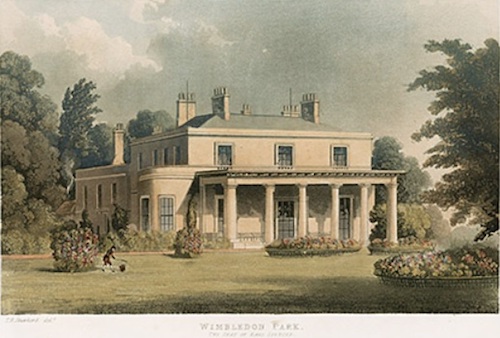The Picture of London, for 1803
Landscaped by Capability Brown in the 18th century, Wimbledon Park featured a man made lake. Large oak trees planted by Brown are still visible at the Park today (Wimbledon’s Hidden Palaces — Lady Wimbledon). Marlborough House, an inventive and elegant mansion, was the one lost to fire in 1785. The first Earl of Spencer cleared the ruins and turfed the grounds. The second Earl of Spencer would begin construction on the site of the new Wimbledon Park House (Wimbledon’s Hidden Palaces — Lady Wimbledon).
Many botantist and naturalist guides from the era highlight the variety of species on display at Wimbledon Park. Its large size and relative proximity to London would make it a natural haunt for those with a naturalist’s bent.

In 1846, the 4th Earl Spencer sold the estate and house to a developer. New roads were laid and house plots popped up, chipping away at the parkland until the remains were purchased by the Borough of Wimbledon ahead of WWI.









